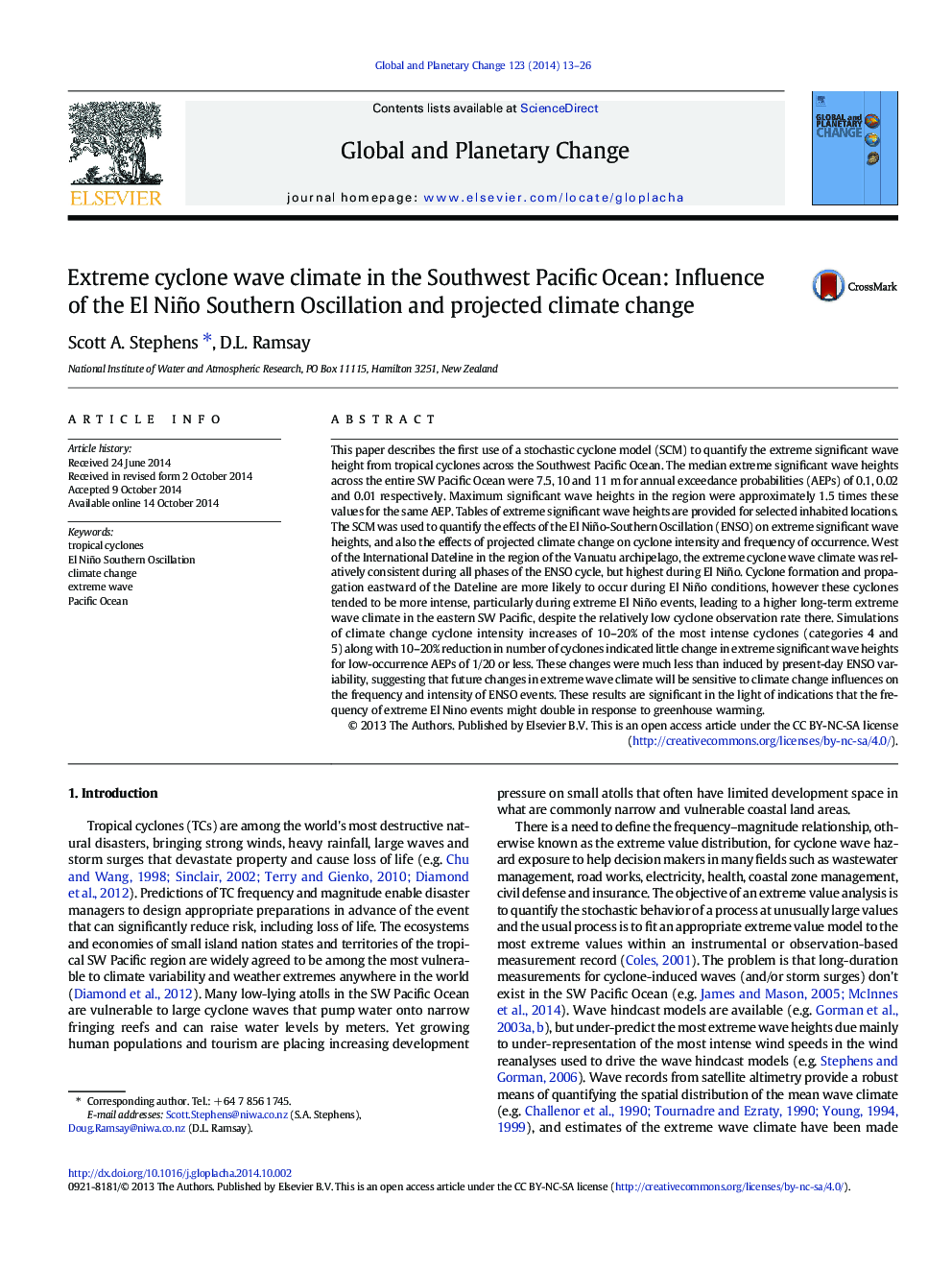| کد مقاله | کد نشریه | سال انتشار | مقاله انگلیسی | نسخه تمام متن |
|---|---|---|---|---|
| 6348129 | 1313640 | 2014 | 14 صفحه PDF | دانلود رایگان |
عنوان انگلیسی مقاله ISI
Extreme cyclone wave climate in the Southwest Pacific Ocean: Influence of the El Niño Southern Oscillation and projected climate change
دانلود مقاله + سفارش ترجمه
دانلود مقاله ISI انگلیسی
رایگان برای ایرانیان
کلمات کلیدی
موضوعات مرتبط
مهندسی و علوم پایه
علوم زمین و سیارات
فرآیندهای سطح زمین
پیش نمایش صفحه اول مقاله

چکیده انگلیسی
This paper describes the first use of a stochastic cyclone model (SCM) to quantify the extreme significant wave height from tropical cyclones across the Southwest Pacific Ocean. The median extreme significant wave heights across the entire SW Pacific Ocean were 7.5, 10 and 11Â m for annual exceedance probabilities (AEPs) of 0.1, 0.02 and 0.01 respectively. Maximum significant wave heights in the region were approximately 1.5 times these values for the same AEP. Tables of extreme significant wave heights are provided for selected inhabited locations. The SCM was used to quantify the effects of the El Niño-Southern Oscillation (ENSO) on extreme significant wave heights, and also the effects of projected climate change on cyclone intensity and frequency of occurrence. West of the International Dateline in the region of the Vanuatu archipelago, the extreme cyclone wave climate was relatively consistent during all phases of the ENSO cycle, but highest during El Niño. Cyclone formation and propagation eastward of the Dateline are more likely to occur during El Niño conditions, however these cyclones tended to be more intense, particularly during extreme El Niño events, leading to a higher long-term extreme wave climate in the eastern SW Pacific, despite the relatively low cyclone observation rate there. Simulations of climate change cyclone intensity increases of 10-20% of the most intense cyclones (categories 4 and 5) along with 10-20% reduction in number of cyclones indicated little change in extreme significant wave heights for low-occurrence AEPs of 1/20 or less. These changes were much less than induced by present-day ENSO variability, suggesting that future changes in extreme wave climate will be sensitive to climate change influences on the frequency and intensity of ENSO events. These results are significant in the light of indications that the frequency of extreme El Nino events might double in response to greenhouse warming.
ناشر
Database: Elsevier - ScienceDirect (ساینس دایرکت)
Journal: Global and Planetary Change - Volume 123, Part A, December 2014, Pages 13-26
Journal: Global and Planetary Change - Volume 123, Part A, December 2014, Pages 13-26
نویسندگان
Scott A. Stephens, D.L. Ramsay,